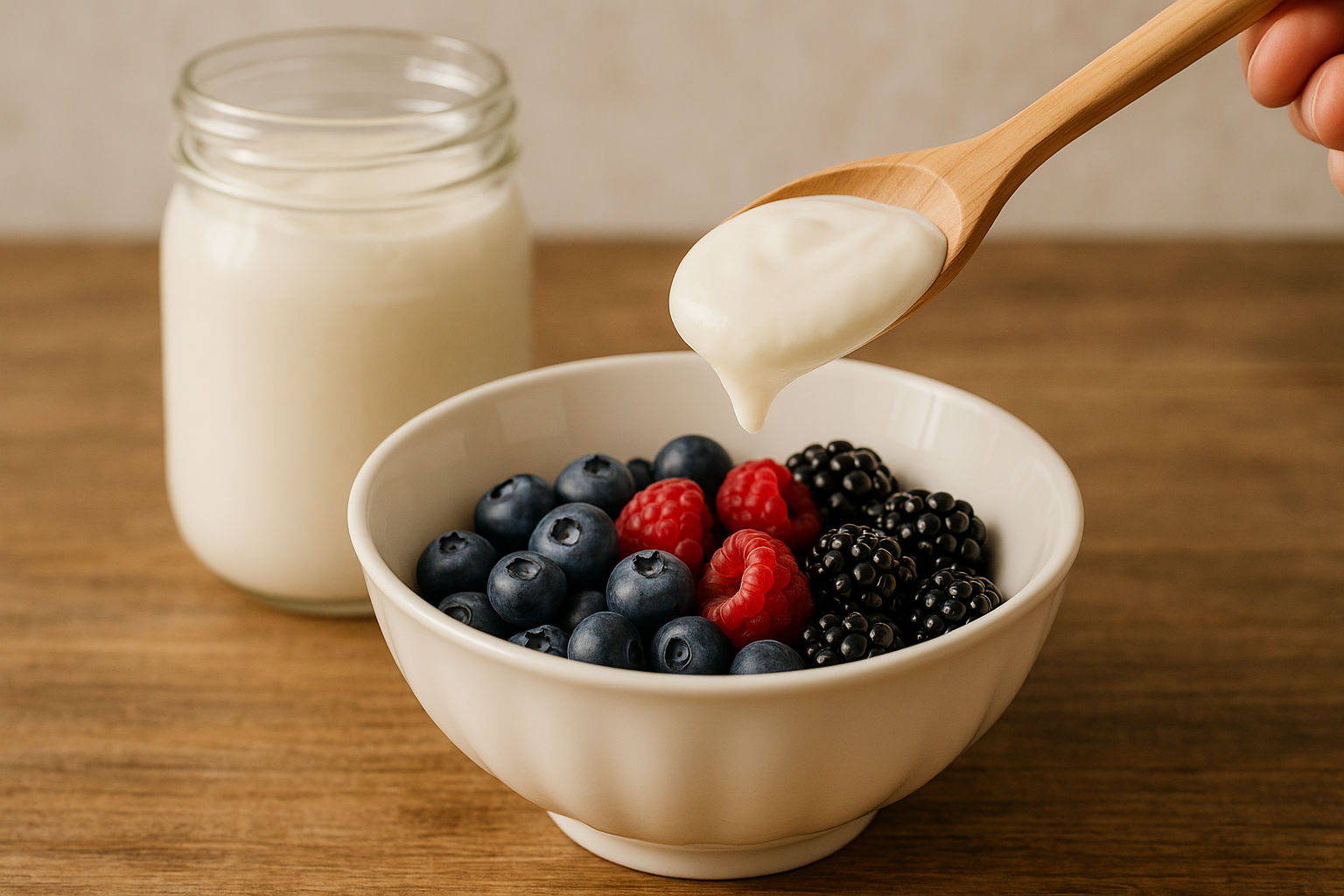
Making Yoghurt with the Mad Millie Greek Yoghurt Kit
Whilst making yoghurt is not a new thing to me, I was keen to use the Mad Millie Greek Yoghurt Kit to see how it may differ from what I have made before. The kit comes in a glass jar and includes a thermometer, cheese cloth, and 5 sachets of culture, everything you need to make lots of yoghurt.
In the interests of experimentation and simply being frugal I decided to use the cheapest full fat milk at the supermarket, and so I bought the Budget brand milk from New World.
I began by measuring out one litre of milk and heating it in a saucepan with the the thermometer clipped to the side to monitor the temperature of the milk. I like to stir the milk regularly to avoid the risk of scalding and also use a low heat setting to heat the milk slowly for the same reason. Heating the milk too quickly may also result in a grainy textured yoghurt.
Heating the milk to at least 82℃ helps to kill any bacteria in the milk that may compete with the yoghurt culture and also changes the structure of the milk proteins. This helps produce a nice thick, firm yoghurt. Holding the high temperature will concentrate the milk through evaporation and produce an even thicker yoghurt.
Once I had heated the milk I allowed it to cool to 40℃ before adding the yoghurt culture as per the instructions included within the kit.
I decided to transfer the mixture to the jar the kit came in, which I had already cleaned and sanitised. I used Star San to sanitise the jar as it is what I had on hand, but Mad Millie's Iodophor would work just as well and is probably more economical.
It is important to incubate the yoghurt at 40℃ for 12 -24 hours as the culture works best at this temperature. I wrapped the jar in a couple of tea towels to provide insulation and placed it in the oven set at 40℃ overnight and had beautiful thick smooth yoghurt the next morning.
best at this temperature. I wrapped the jar in a couple of tea towels to provide insulation and placed it in the oven set at 40℃ overnight and had beautiful thick smooth yoghurt the next morning.
The risk with using an oven to keep the yoghurt warm is the potential for large temperature variations, which may impact the activity of the culture and be detrimental overall. This is why I wrapped tea towels around the jar.
Another, and much easier way to maintain the desired temperature is to use an insulated container, such as the Mad Millie Cheesemaker.
 Now the all important question is, how did it taste? Well, I thought it tasted very very good. The texture was smooth and creamy, and it had a nice smooth and not overpowering tang. I enjoyed eating it on its own or with a small dollop of raspberry jam.
Now the all important question is, how did it taste? Well, I thought it tasted very very good. The texture was smooth and creamy, and it had a nice smooth and not overpowering tang. I enjoyed eating it on its own or with a small dollop of raspberry jam.
I decided the yoghurt was thick enough for my liking so I did not use the cheese cloth to strain it and make it even thicker. Although if you like your yoghurt very thick you could take this extra step.
